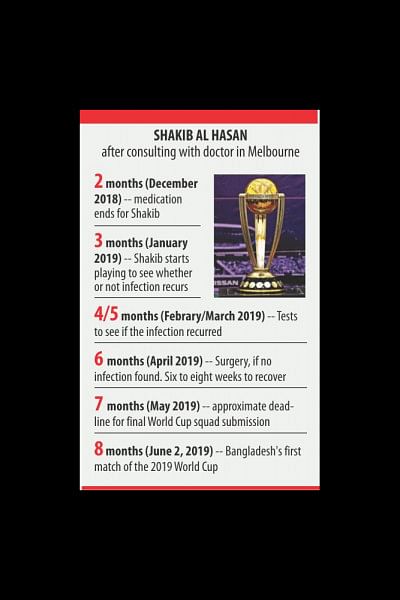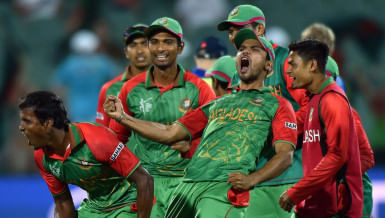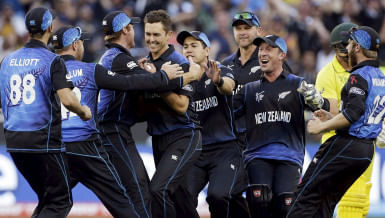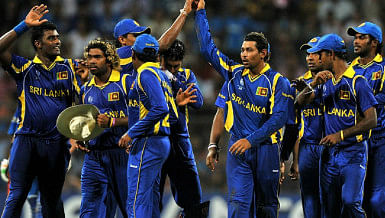When South Africa captain Faf du Plessis won the toss and elected to field, a few of the more faint-hearted nature feared that Bangladesh may suffer a fate similar to their sub-continental neighbours, Pakistan and Sri Lanka. But the Tigers blew those fears away with the kind of batting that they have been displaying more often than not since their rise in the last World Cup four years ago.
In what was their opening World Cup match after four years at The Oval in London, the Tigers stroked their way to 330 for six -- their best effort in ODI cricket and also the highest innings total in this World Cup so far.
South Africa needed to create history to win the game -- no team batting second in a World Cup match have ever toppled a score of 330 -- and, although the Proteas tried their best in a pulsating encounter, they eventually fell 22 runs short of the target.
It was nice to hear one of the commentators remark after Bangladesh had clinched the game that it was not an upset, but a deserving reward for an up-and-coming Tigers. His statement was not something out of context but recognition of the progress the Tigers have made so far.
That progress was reflected in every facet of the game, in which the South Africans tried with all their resources to put a pause to.
The Tigers were not scared of the famed South African pace attack. They did not falter against short-pitched deliveries like Pakistan had against the West Indies a couple of days ago when the former champions were shot out for 105. Nor did they stumble against a quality pace attack as Sri Lankan had done against New Zealand when they were bundled out for 136.
They counterattacked with such authority that it forced Du Plessis to opt for alternative options. Young opener Soumya Sarkar set the tone for a very good total with a sublime 42 off 32 balls. The way the left-hander batted against the express pace of Kagiso Rabada and Lungi Ngidi was a spectator’s delight. It was not his raucous pull shots or exquisite cover drives, but the world of time he got that mesmerized fans most. He is increasingly becoming an asset at the top of the order for Bangladesh.
And opponents beware! If he could play longer innings it would have a devastating impact.
It was also a game where Bangladesh arguably showed that they were one of the few good teams who know how to construct an innings. The third-wicket partnership of 142 between Shakib Al Hasan (75) and Mushfiqur Rahim (78) was the product of a professional approach that involved minimum risk.
Unfortunately, what is still holding the Tigers back from going to championship material from pretenders was the inability of both Shakib and Mushfiqur to turn those big scores into big hundreds. Both were dismissed at a time when Bangladesh were looking capable of posting a total beyond 350.
But despite their departure, Bangladesh prospered in the last five overs thanks to another display of professional batting from Mahmudullah, who scored an unbeaten 46 off 33 balls. Mahmudullah found a perfect ally in young batsman Mosaddek Hossain (26 off 20 balls), who repaid the faith of the team management for his selection as the number seven batsman ahead of Sabbir Rahman.
The job was still half-done and the Tigers knew that South Africa would come in all-guns blazing. They did come hard and in patches appeared to have tilted the balance in their favour. But a disciplined Bangladesh bowling attack held their nerve despite some sloppy catching. Soumya dropped Miller and Mahmudullah also reacted late while attempting to grab a top-edge from the left-hander at the backward point boundary. Mushfiqur Rahim somehow amended a dropped catch by running out a confused Quinton de Kock with a direct hit.
You can win a few games with those missed chances, but you cannot win tournaments. Regardless, it was a dream start for the Tigers. The onus is now on them to disprove former New Zealand captain Brendon McCullum’s prediction that they can’t win more than one game at this World Cup.


 For all latest news, follow The Daily Star's Google News channel.
For all latest news, follow The Daily Star's Google News channel. 











Leave your comments